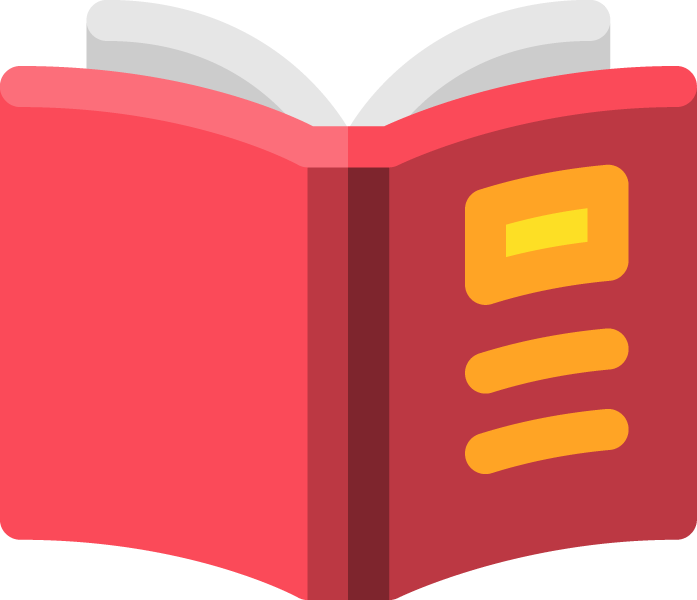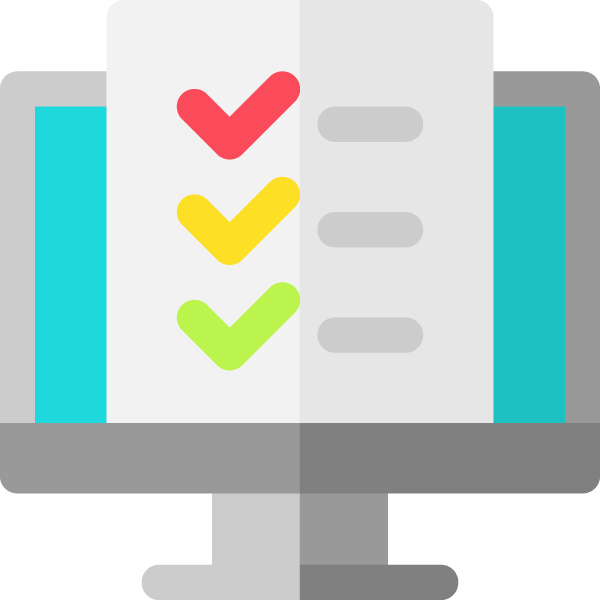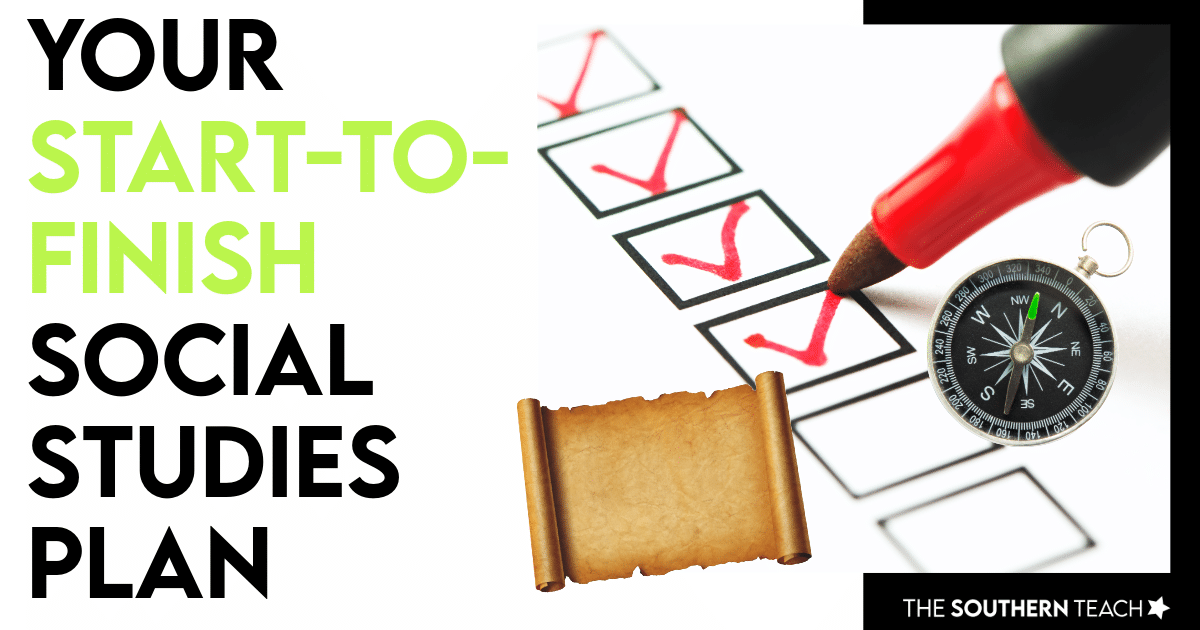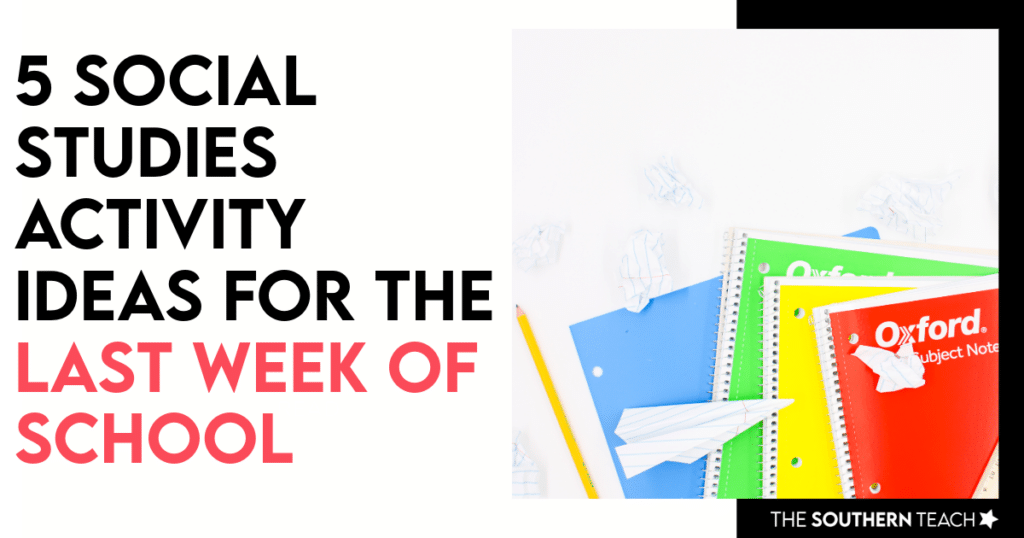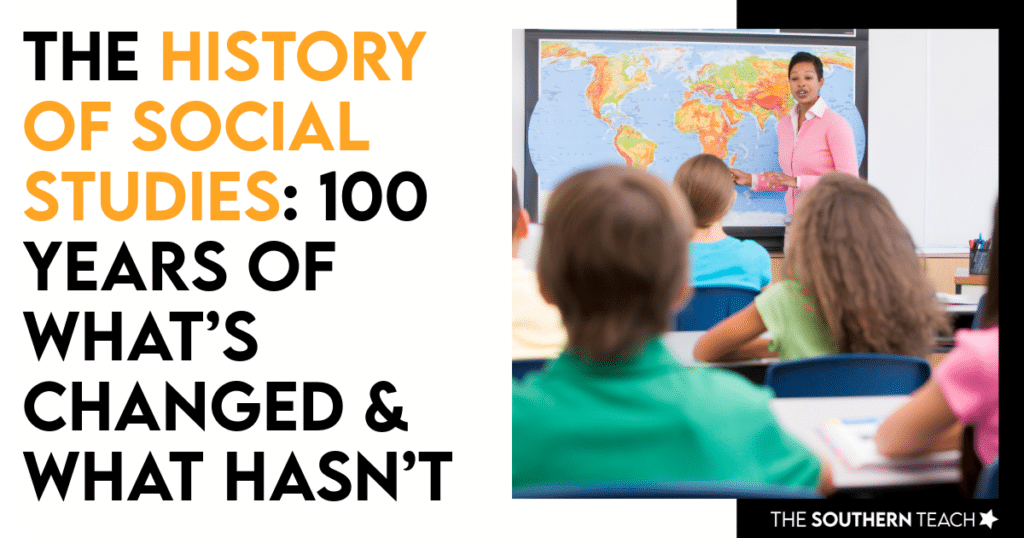Your Fantastic Start-to-Finish Social Studies Pacing Guide for Grades 3-5
By Kirsten Hammond
Share This Post:
If you’re an upper elementary teacher feeling overwhelmed trying to figure out how to consistently fit social studies into your school year, you’re not alone. One of the most common questions I get is:
“How do I pace social studies across the year so I’m not rushing through everything at the end?”
The good news? You don’t need a complicated curriculum map or a rigid daily schedule. What you do need is a flexible, quarterly social studies pacing guide that helps you stay consistent, purposeful, and aligned with key social studies domains – all without feeling like you’re falling behind.
Whether you’re teaching U.S. history, state history, or world cultures, this pacing guide is designed for grades 3–5 and will help you confidently plan out the year. Let’s walk through what a strong yearlong plan can look like.
Watch the full video episode on Youtube!

Why Every Teacher Needs a Social Studies Pacing Guide
Without a clear social studies pacing guide, social studies often becomes the “extra” subject that only gets taught if time allows. But when you have a plan, you can make space for rich discussions, meaningful projects, and engaging lessons…even in short blocks of time! A social studies pacing guide is a way to help students make real connections between concepts, instead of learning social studies randomly in isolated or rushed lessons.
This social studies pacing guide isn’t about rigid rules. It’s a flexible framework that gives you direction and helps you maintain momentum all year long!

Quarter 1: Build Routines and Explore Geography
The first quarter of the school year is all about establishing routines and setting expectations. Before diving into the content-heavy lessons, use this time to build up your classroom community.
Introduce students to the structure of your social studies block – whether it includes warm-ups, note-taking, or interactive notebooks – and begin forming those habits that will continue throughout the year.
Once your routines are in place, shift the focus to geography. This is the ideal time to explore map skills, physical and human geography, and regional features of your state and country.
You might introduce the concept of regions by having students create travel brochures or persuasive writing pieces that encourage someone to visit a particular location. It’s also a great time to integrate technology with interactive map tools or hands-on activities.
If your state observes Celebrate Freedom Week in September, this is when you’d introduce foundational documents like the Constitution and Declaration of Independence.

Quarter 2: Dive into Government and History Foundations
As fall moves into winter, shift your focus to government and early history. This quarter is a great time to talk about representative government, the structure and functions of different levels of government, and the historical foundations of the community, state, or nation you teach.
This is also a great time to build connections between classroom rules (which would have been established in Quarter 1) and real-world laws and citizenship responsibilities. Students can begin exploring how rules help maintain order not only in school but in society, and how government systems are designed to function.
In December, bring in cultural and winter celebrations! Whether your school observes multiple holidays or focuses mainly on Christmas, this is an opportunity to help students explore global traditions through research projects, presentations, or comparison activities. These lessons are always engaging and help students see how culture and history intersect in meaningful ways.

Quarter 3: Historical Turning Points and Economics
When students return from winter break, get them diving deeper into history! Quarter three can be packed with powerful turning points, such as the American Revolution, Westward Expansion, the Civil War, or the Texas Revolution (depending on your standards).
Alongside historical events, you can begin to introduce key economic concepts such as goods and services, needs and wants, and supply and demand. This combination helps students understand how history, government, and economics are deeply connected in shaping society.
February is the perfect time to incorporate Black History Month. Use this opportunity to explore biographies and primary sources connected to civil rights leaders, inventors, and changemakers.
Projects like classroom economy simulations, biography lapbooks, or even mini business-building activities allow students to apply what they’ve learned in creative and hands-on ways.

Quarter 4: Modern Culture, Review, and Final Projects
In the final quarter of the school year, shift your focus to present-day culture, innovation, and review. This is a natural time to explore the impact of art, music, literature, science, and technology on society. Students can learn about famous inventors, artists, and leaders who’ve contributed to modern culture and examine how those contributions shape the world today.
You can also use this time to spiral back to previously taught topics, filling in gaps and reinforcing key concepts. Encourage students to reflect on how geography, government, history, and economics all connect and contribute to the culture of a society.
Wrap up the year with a culminating project, such as a culture fair, research presentation, or living history museum. These larger projects give students a chance to showcase what they’ve learned and build confidence in their understanding of the year’s content.

Want a Done-for-You Social Studies Pacing Guide?
If you’d rather not build your own social studies pacing guide from scratch, I’ve created one for you inside the Smart and Simple Social Studies Guided Curriculum. Each unit includes a daily pacing calendar so you can confidently move from one topic to the next without stress.
It’s flexible, easy to adjust for your state standards, and designed specifically for grades 3–5!
The general structure of the pacing follows the framework I’ve shared:
- Begin the year with geography
- Integrate government and history
- Sprinkle in economics and biographies
- End with culture and present-day connections
With the social studies pacing guide included, you’ll never have to wonder what to teach next – it’s already mapped out for you!
Having a clear social studies pacing guide in place transforms your teaching from scattered to strategic. It helps you stay consistent, gives students a well-rounded understanding of key concepts, and brings more intention into every lesson.
Remember, this guide is just that – a guide. Adapt it to meet your students’ needs, and don’t be afraid to take extra time on the topics that matter most!
If you’re ready for a simple and engaging way to plan your social studies year, check out the Smart and Simple Social Studies Curriculum and get access to pacing guides, lessons, and everything you need to make social studies stick.
kirsten hammond
Kirsten is a former 3rd and 5th grade teacher who loves helping upper elementary teachers by creating resources and sharing ideas that are engaging, research-based, and TEKS-aligned. She is a work-from-home mama of 3 rambunctious little ones and loves running, true crime, and lots of coffee.

